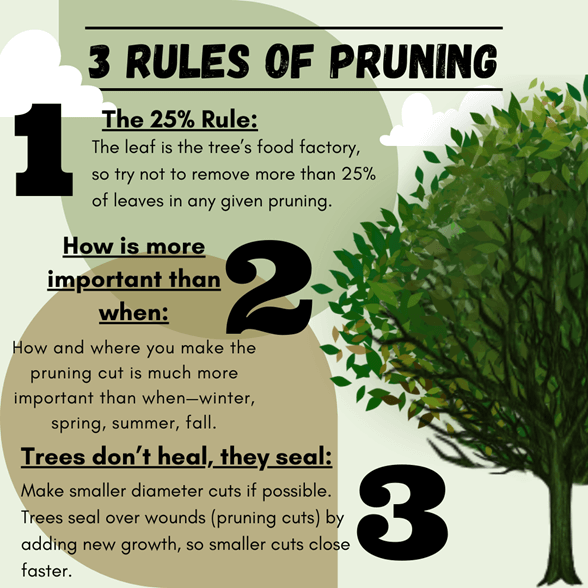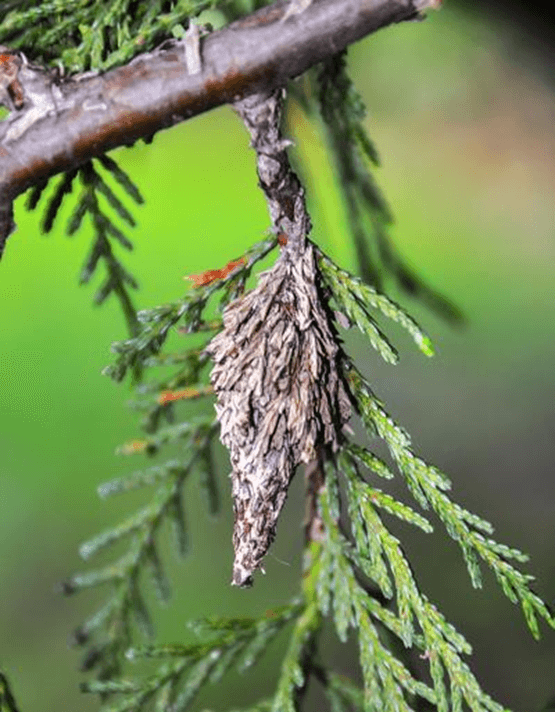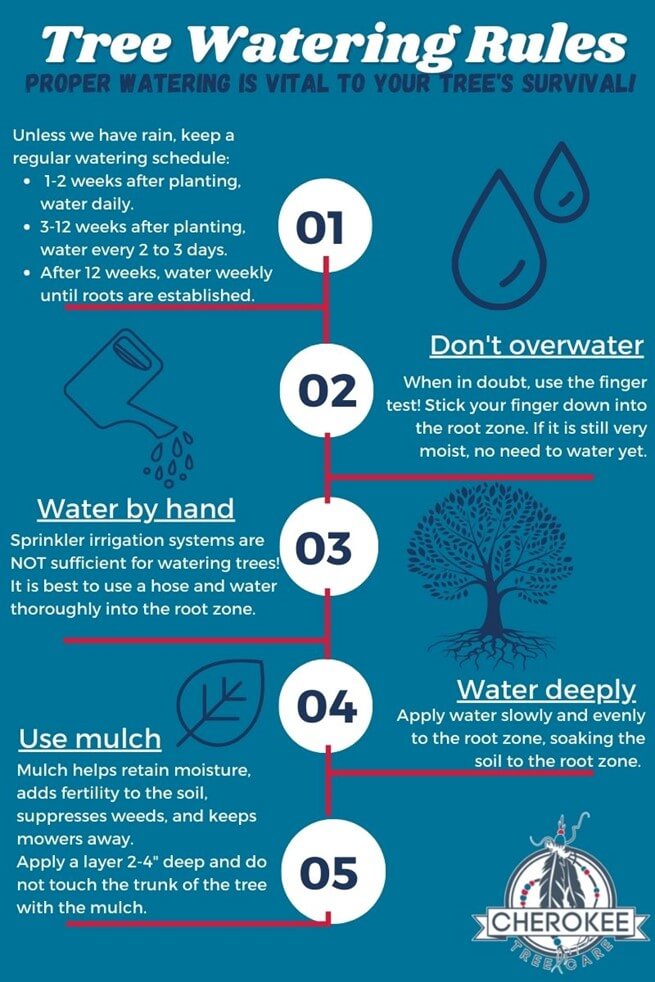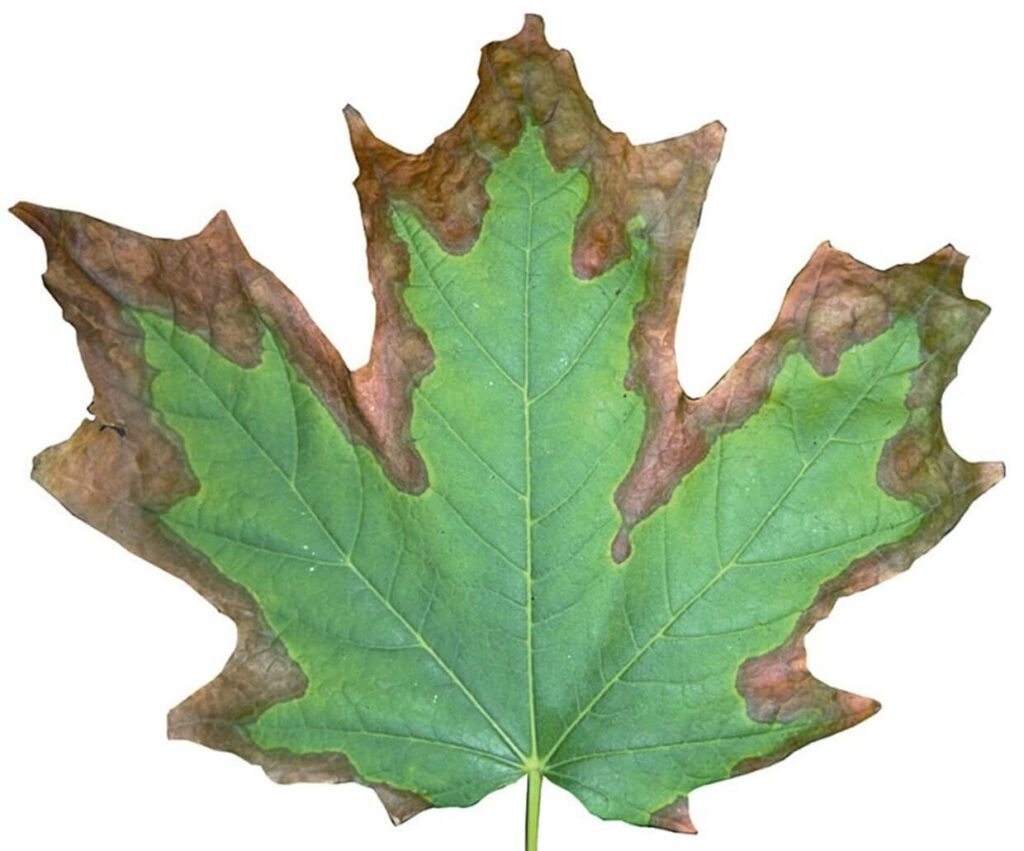Summer is most definitely here in Missouri! The days are hot and humid and this year, we’ve seen very little rain during the heat wave. You may have noticed some stress on your trees this season. Our arborists are here to help and give you advice on how to best care for your trees in the heat. In this month’s newsletter, we will be discussing some tree care tips for the summer months. Pruning, insect inspections, and proper watering are the key factors in keeping your trees healthy.
Pruning Tree Care Tips
NOW is a great time to prune your trees!
Contrary to popular belief on proper pruning and timing, most trees can be pruned any time of year. There are only two tree species in Missouri we avoid pruning during the growing season which are Oaks and Elms to limit the risk of Oak Wilt and Dutch Elm Disease. Pruning of Oaks and Elms will begin in August, give us a call to get on our list now!
We follow 3 rules of pruning:

Finally, it’s important that homeowners trust and hire arborists to take care of their trees. We have a team of tree climbers for the best access to your trees.
Trees are individuals—no two are exactly alike or in the same location. Contact Cherokee Tree Care for all your tree trimming needs or request a free estimate!
Check for Insects

Our Plant Health Care Department consists of Certified Arborists that are trained in diagnosing problems with your trees and shrubs. With the warmer weather comes insect activity, and some of these insects are pests to our trees in Missouri.
There is a process for diagnosing problems with trees. The first step is identifying your tree species. It is important to note that most insects and diseases are species-specific. This means that they only like one or a handful of species. So, the fungal disease found on your Blue Spruce isn’t going to infect your Sugar Maple and the Emerald Ash Borer feeding on your Ash tree won’t be interested in your Dogwood.
Currently, we are seeing a lot of insect activity. Here are the usual culprits:
Bagworms. These pests are typically found on evergreens, but also like a few deciduous species. Bagworms will grow as they feed through the season and will fully enclose themselves in their bags in mid-August. At that time, we can no longer spray them and will need to wait until next year for treatment.
Japanese Beetles have been found on Roses, Elms, Lindens, Birches, Crape Myrtles, and many more. These pests leave a lacey appearance on leaves and are a big landscape nuisance.
Mites are a common pest on a few different trees and shrubs. We most often find the most damage from mites on Alberta Spruce and Burning Bushes. Damage will look like discolored leaves and defoliation.
We’ve seen more Aphids this year on a handful of trees and shrubs. They feed on the sap of leaves and will often cause curling leaves and a sticky residue.
These are a few of the problems we are seeing on properties now. The best way to keep on top of tree pests is to hire a certified arborist to inspect your property. Inspections are a service our Plant Health Care Department offers. They are a great way for us to check over your entire property and have a trained professional treat any pests found while there.
Give us a call if you have questions about the health of your trees and shrubs.
Proper Watering
In true Missouri fashion, we went from a cool and very wet spring, straight into hot, humid, and dry summer months. The fluctuations in weather extremes can be hard on some trees and supplemental watering may be necessary. However, some rules should be followed when watering our trees to ensure it is not actually harmful.
Newly planted or young trees require the most supplemental watering, while most mature trees only need it when we are facing droughts.

Some rules as stated on this watering graphic include the proper watering schedule for newly planted trees, ensuring you don’t overwater by using the ‘finger test’, not using sprinklers as sufficient watering methods for your trees, watering deeply, and using mulch to retain soil moisture.
Watering the root zone instead of the foliage is another important rule to ensure leaves don’t get burned or fungal issues arise.
Some drought stress signs include foliage that looks scorched and edges of leaves beginning to brown.

Water is a vital ingredient to your tree’s health and survival. As we go through these hot and dry months, take extra care to check on your landscape plants. Give your local tree care company a call if you have any questions or concerns about your trees or need more tree care tips!

